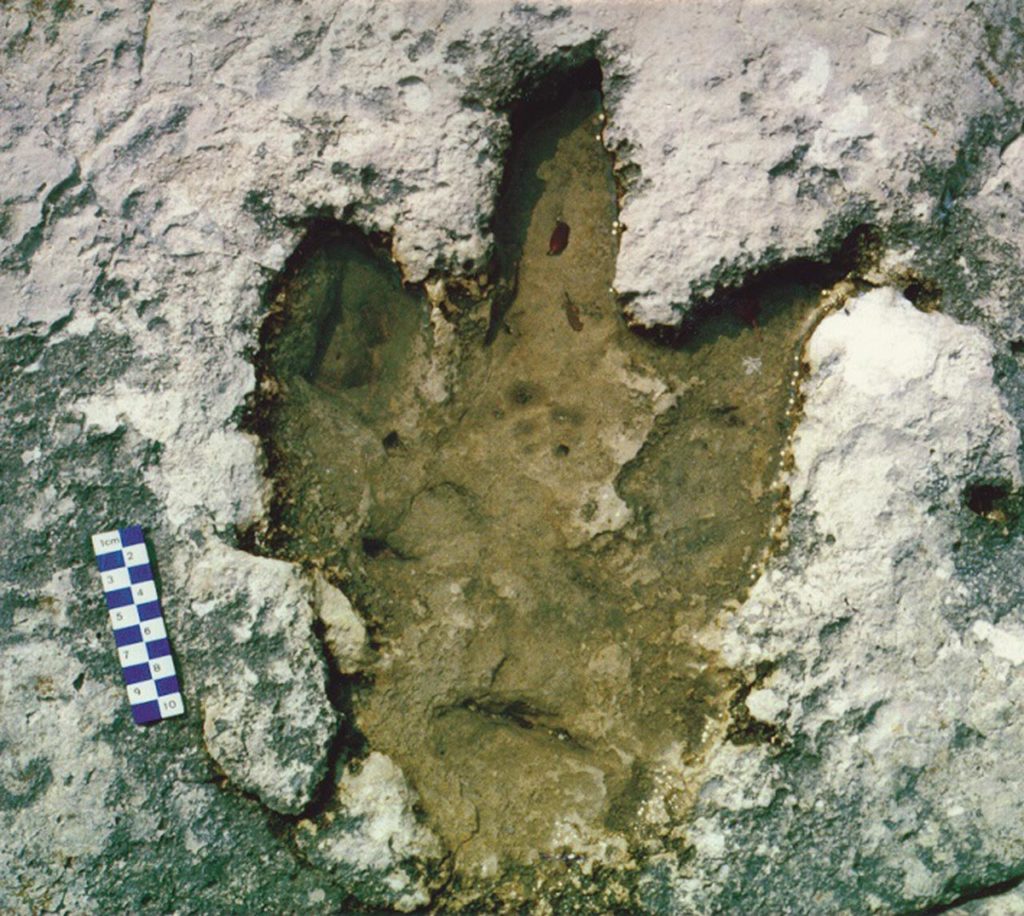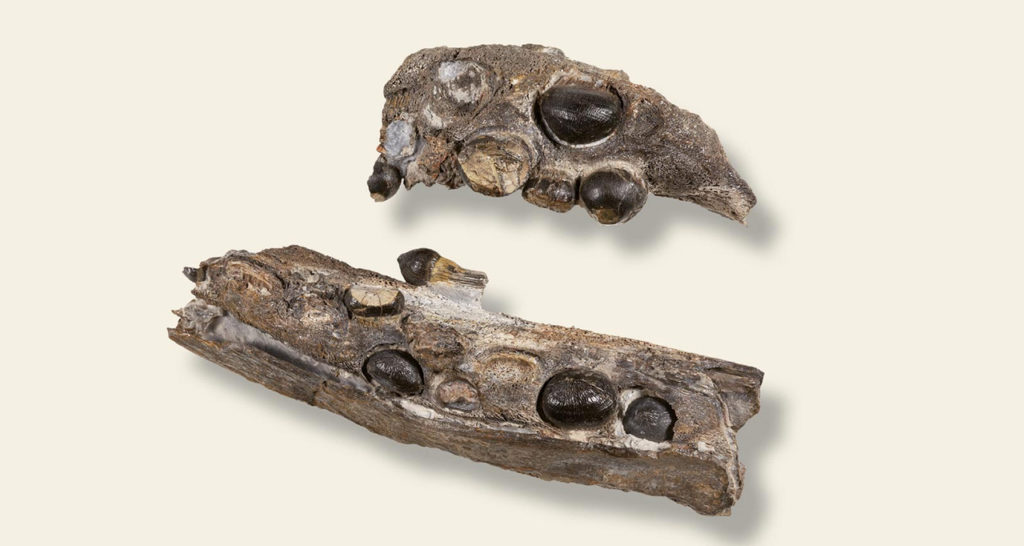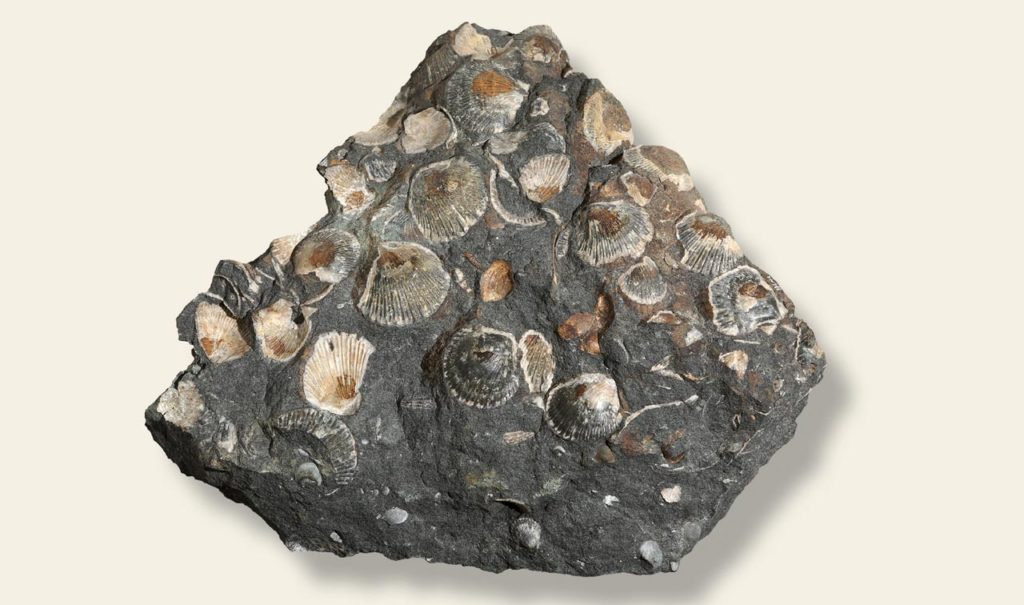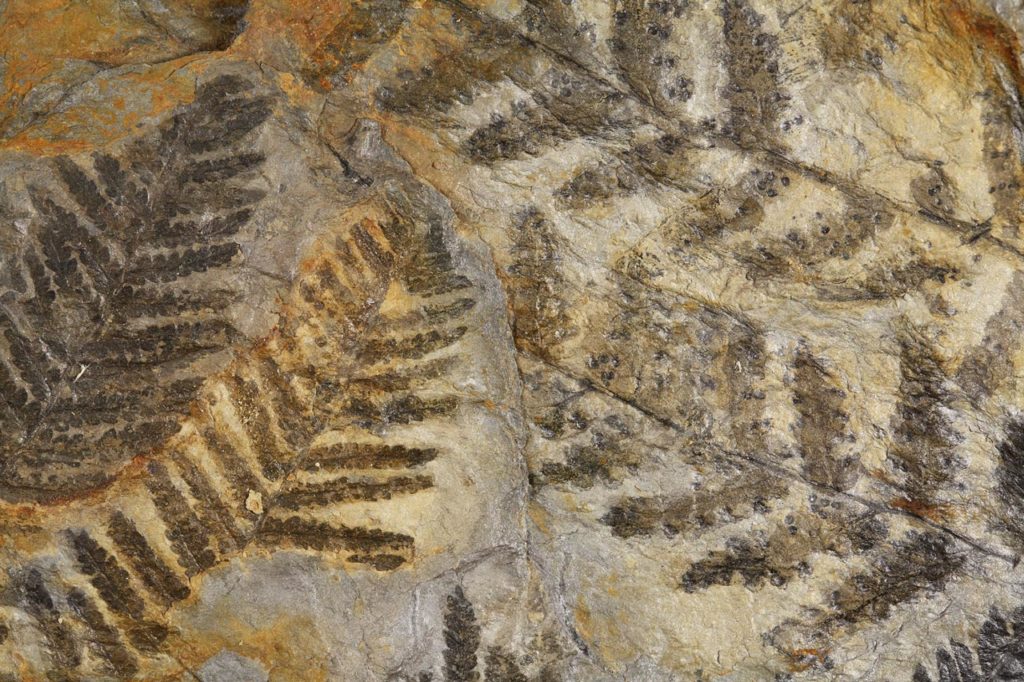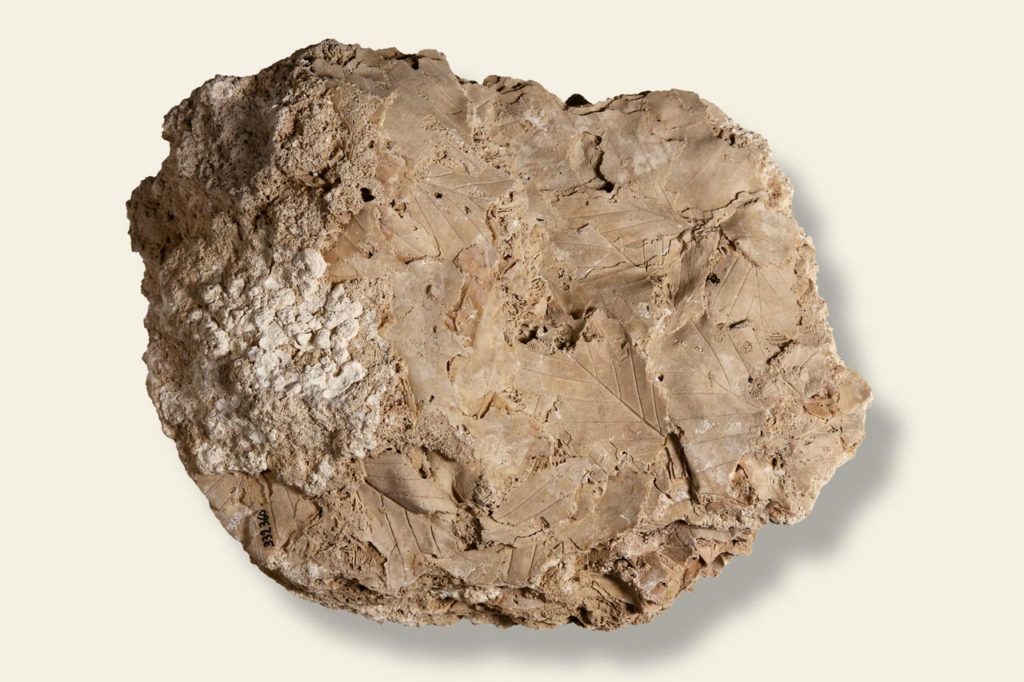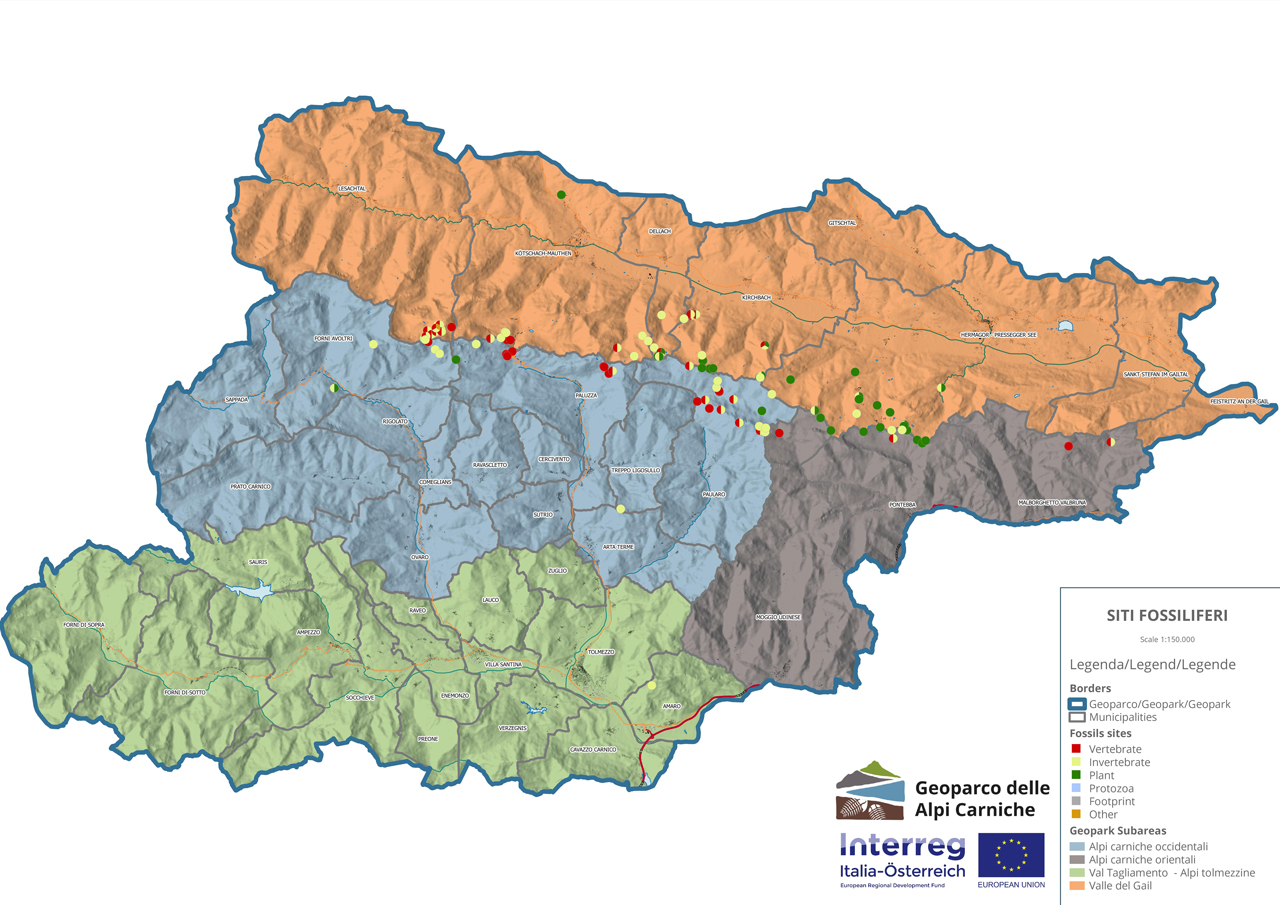The Fossils of the Carnic Alps Geopark
The rocks that emerge in the area of the Geopark are rich in significant fossil evidence that can take us on a journey covering almost 500 million years, starting at the beginning of the Palaeozoic era, a unique situation in Italy and one which probably has no equal in Europe.
This enormous wealth is linked to the widespread presence in this area of rocks, sedimentary in origin, that have allowed us to track organisms that lived in the past. In fact, it is in sedimentation environments that most fossils are formed and preserved.
What is a fossil?
Fossils represent significant evidence of the past. They include not only the parts of the organisms (bones, shells, armour, leaves, etc.) but also the signs of their activity (prints, tracks, and nest sites) and their feeding (fossil pellets and excrement - so-called “coprolites”).
How are fossils formed?
Fossils are formed through a range of physical and chemical processes that act over periods of time of variable length (in the order of many thousands or millions of years).
The most common form of fossilization is mineralization. After death, an organism is buried by sediment and incorporated into what will eventually become a sedimentary rock. During this long process the animal loses its soft parts (lost, eaten by necrophagous organisms or destroyed by the processes of decomposition) while the hard parts (bones, shell, teeth, armour) may retain their original composition or may be substituted by various minerals without losing the original “form”. The shells sometimes dissolve completely and only the filling of the part where the animal lived (an internal model or cast) remains, while in other cases only a cavity remains or the external impression of the original shell.
Another process of mineralization is carbonization (or carbonification), in which the organic parts of an organism, water and volatile components (such as CO2) are eliminated, and, in their place, there remains a thin carbonaceous film, which shows a imprint of the soft parts. This process mainly affects plants and – if carried to its extremes – leads to the formation of coal.
The most resistant parts of plants, such as trunks and branches, may also be preserved by being silicified (a mineralization process that affects other organisms more rarely).
Plants in a subaerial environment can be encrusted with calcium carbonate deposited by waters rich in this mineral; the organic remains rot and disappear while their imprint remains on the encrusting mineral (travertine).
Even the incorporation of an organism into a material (amber, bitumen or ice) that isolates it from the outside and mummification are considered fossilization processes.
Exceptionally, organisms with a soft (“worms”, jellyfish, etc.) or non-mineralized (insects and plants) body may also be preserved. This occurs in deposits formed in anoxic marine environments, where the lack of oxygen at depth prevents the presence of predatory, necrophagous and decomposing organisms.
The findings in the Forni dolomite of the Preone palaeontological outcrop (a geological site of international importance) is one example.
The importance of fossils
Through what has been preserved in the fossil record, however partial, it is possible:
- Retrace the main events in the history of life and the evolution of organisms;
- Reconstruct the palaeogeographic and palaeoclimatic conditions;
- Date rock successions.
The fossil areas of the Carnic Alps Geopark
The chart below shows the distribution of some of the fossiliferous areas in the Geopark area constructed on the basis of data provided by studies and research and reported in scientific publications.
For a more detailed consultation of the territorial data, go to the Geopark's WebGIS page.

